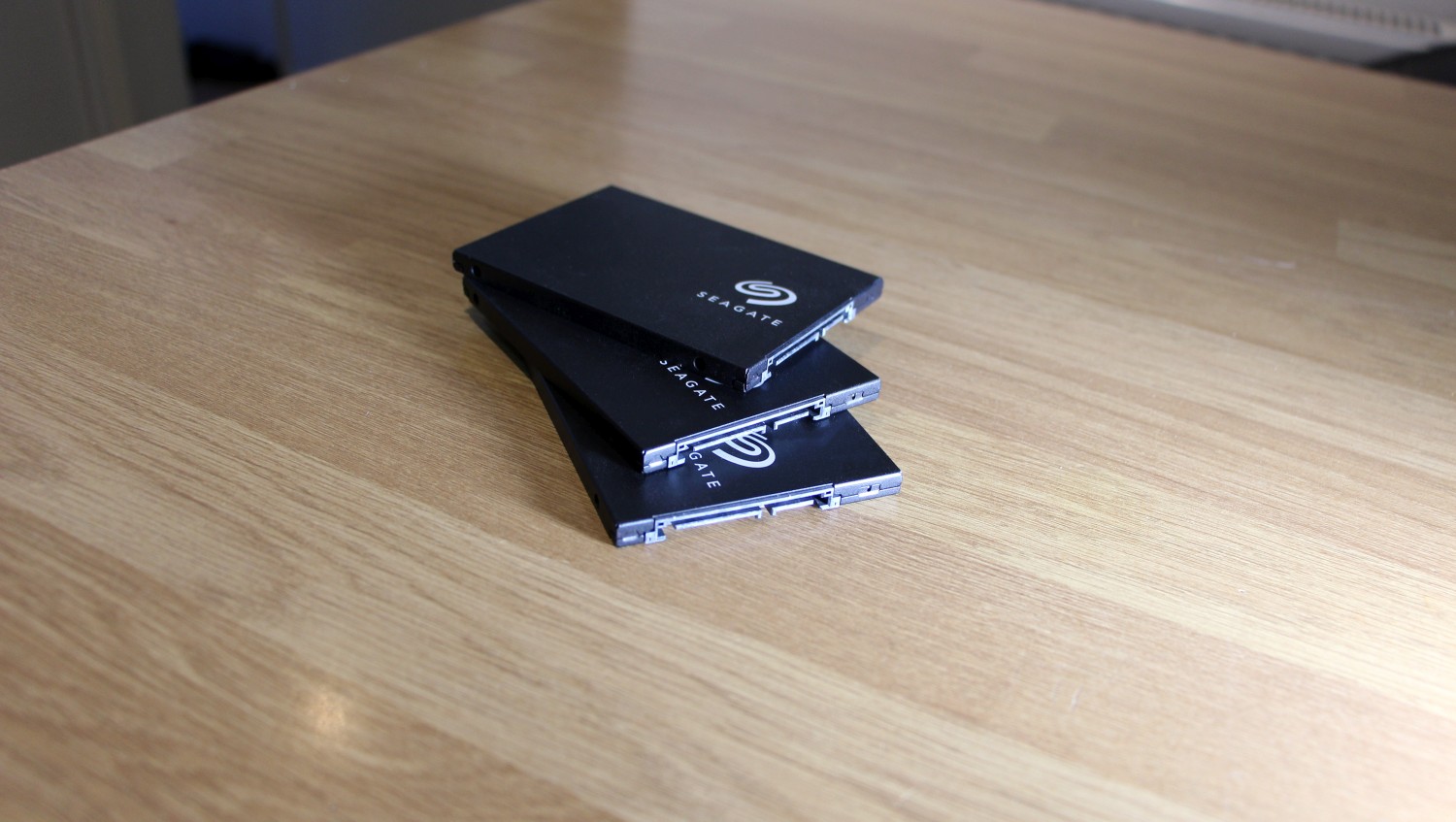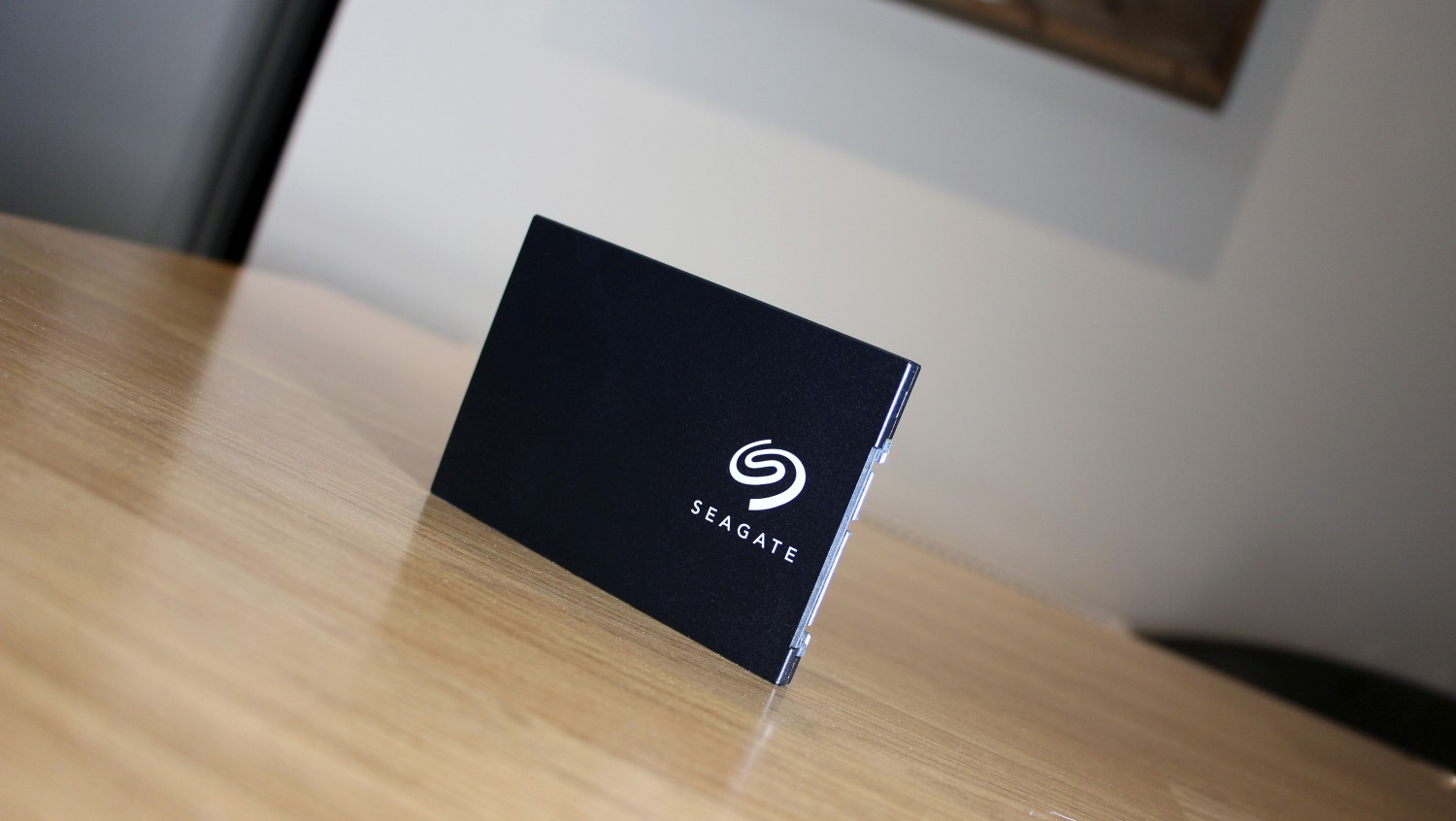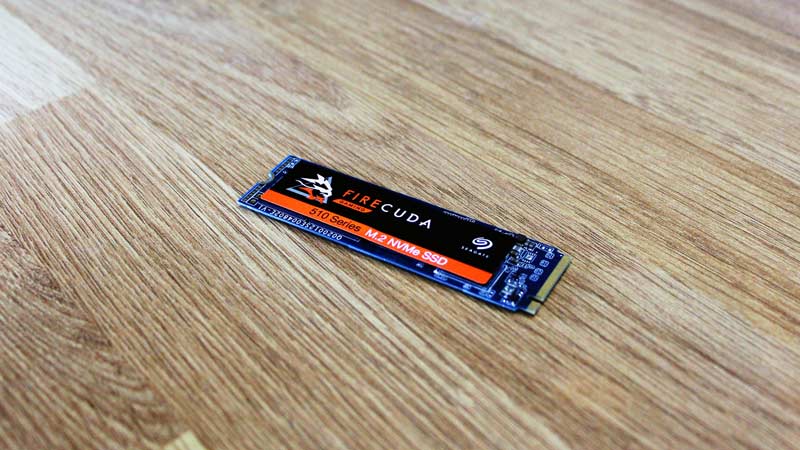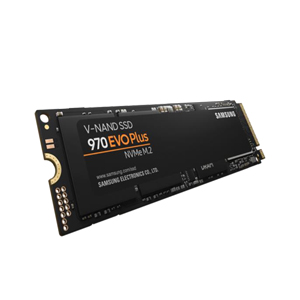Speed matters. That’s the core tenet of any PC. A part of SSD speed, that people don’t speak about enough is an SSD’s TBW rating. Here’s what is means.
Whether you want to render the latest AAA games or handle large spreadsheet datasets. Without high-speed components, you can be left with a lacklustre experience. Longevity is rarely discussed in the same breath. Especially when you might upgrade in a few years anyway. But when it comes to storage, that’s more important than you might think. That’s where Total Bytes Written, or TBW, becomes crucial. (More on this below).
Nobody likes it when their hardware fails. Motherboards being zapped by cheap power supplies, or overzealous overclocks cooking processors means replacing a component that can be quite costly. But other than the damage to your wallet, there’s little permanent about that. However, it’s not so with storage. When a hard drive or SSD fails, if you don’t have a backup in place, you can lose priceless data. Photographs, videos and work documents that just cannot be replicated can vanish without a trace. Furthermore, losing an entire games library, or having corrupted data spoil your replay of a classic title can be devastating. As a side note, if you’re wondering whether you need an SSD or HDD (or both) for your gaming PC, check out our recent article – Do you need SSD or HDD for gaming?
All of the above demonstrate why backups are so important, but also why taking note of a drive’s durability is too. In an age of high-speed SATA and PCIExpress SSDs being more affordable than ever (and more necessary than ever, once next-generation consoles utilize them for new game features) the durability and stability of your SSD is vital. Thus, you need to consider its TBW.

What is TBW?
TBW, or total bytes written, is a metric (typically in terabytes) assigned to storage drives that tell you how many terabytes you can write to the drive over its warranty period before the memory cells within it begin to degrade and the possibility of data loss and entire drive failure increases. At that point, its recommendable to replace the drive, as your data on it is no longer as safe as it once was.
TBW is spread across the drive’s lifetime warranty, which is typically designated in multiple single-digit years, often 3 or 5. TBW figures can range from as low as 30TB in some drives, to multiple thousands of terabytes in others. The warranty covers you to write that much data over however many years it lasts before degradation should occur, whether you do it in a very busy period over a few weeks, or periodically over the years, the warranty covers it for.
And What is DWPD?
This figure can also be expressed as data writes per day, or DWPD. That equates to how much data can be written every single day of that drive’s in-warranty lifespan. Typically you’ll see this displayed in tens or hundreds of gigabytes.
Although DWPD is more typically used in enterprise settings, it can be the more accurate of the two readings as some manufacturers do not factor drive capacity into their TBW figures. Larger drives can spread their writes across a greater array of memory cells, so typically offer greater endurance. That is more apparent when endurance is displayed in DWPD, if manufacturers offer a blanket TBW figure for their storage devices.
In either case, a larger rating qualifies a drive as having greater endurance throughout its warranty period. This makes it an important factor in purchasing decisions. Especially when it comes to drives that have otherwise similar specifications when it comes to capacity and performance.
What affects drive TBW?
Solid state drives, whether more traditional SATA 2.5-inch drives, or more recent M.2 and PCIExpress drives, are all built on the same underlying technology: NAND flash memory chips. They’re paired with a controller that helps decide where data goes when writing and finds it later when reading. This unlocks the kind of performance that the physical spinning platters of sequential reading hard drives could only dream of.
But all that speed comes at a cost. NAND flash wears out with use. Each cell of every memory chip can only be written to so many times before it starts to become unreliable. There are several reasons for this, from memory wear, to read disturbance, but suffice to say that flash memory has a finite lifespan.
TBW is a metric to conceptualise that lifespan and it’s directly affected by the rate with which its memory cells degrade. As well as how you use a drive, there are many factors which contribute to that rate of degradation.

The Type of Memory Cell Used
One of the most important factors is the type of memory cell used. Traditional single-level cell (SLC) NAND can only hold one bit per cell, while multi-level cell (MLC) NAND can hold two. Triple-level cell (TLC) contains three bits per cell, and quad-level cell (QLC) NAND can hold four bits per cell. That grants it the ability to handle four times the amount of data as traditional SLC flash memory in the same physical space. But they also tend to be slower. And their endurance is worse, too. This is because they support fewer program/erase cycles – the process of overwriting older data in a flash cell.
SLC flash supports between 50,000 and 100,000 cycles, but is the most expensive of NAND flash types. MLC flash can be up to four times cheaper than SLC, but it supports far fewer write cycles. Traditional, planar, or 2D NAND, can support as few as 3,000 write cycles, while enterprise-grade MLC can reach as high as 10,000 cycles. Using 3D NAND stacking techniques, this can be improved to as high as 35,000 program/erase cycles.
TLC has a planar P/E cycle rate of 300 – 1,000, with a 3D NAND cycle capacity of up to 3,000. QLC is only manufactured in 3D NAND configurations and offers between 150 and 1,000 program/erase cycles
With the storage industry pushing towards larger capacity drives at more affordable prices, TLC and QLC are, in 2020, the most common NAND memory used in SSD manufacturing. Cheaper drives tend to use QLC, with more expensive enterprise and consumer drives leaning most often towards TLC. That’s part of what lends them greater endurance, and (along with controller choice) higher performance.
Temperature
Temperature can also affect the wear of a drive. But as this is not controllable by the manufacturer, is not reflective of TBW as a figure – it’s merely something you’ll need to maintain at a safe level to take full advantage of your drive’s capabilities. Fortunately, most SSDs put out very little heat by themselves. So, as long as you have adequate case ventilation, it’s not something you need overly concern yourself with.
All Chillblast PCs are built with safe operating temperatures and noise levels in mind. So, whether you’re building a high-end gaming PC or a quiet workstation, all Chillblast systems are confirmed to have adequate cooling for your needs before they ever leave our warehouse.
Technologies that help TBW
To extend the TBW of their drives, manufacturers have a number of technologies in place that each contributes to prolonging the safe operating life of your SSD.
Overprovisioning is one of the most common technologies. It involves removing user access from a selection of memory cells to use as a temporary holding space for data. This limits the frequency and number of program/erase cycles that a drive goes through. It’s part of the reason that a usable SSD capacity often feels under-reported in your operating system, where, for example, a 500GB drive will report at just 465GB, or similar.
The TRIM command is a form of background “garbage collection” controlled by the operating system, whereby it can inform the SSD of data cells that can be completely erased and overwritten without the need to read the data first. By keeping the device as clear of unnecessary data as possible, TRIM maintains peak performance, whilst also reducing unnecessary writing of data to new cells while older data is checked and removed, improving overall longevity, and TBW.
Some manufacturers also employ advanced error correction techniques and clever firmware that manage the data in ways that reduce the amount of writing to individual memory cells. This further extends the life of a drive and increasing its overall TBW.

How much TBW do you need?
Total bytes written figures can vary dramatically from drive to drive and are often paired with different length warranties depending on their price, quality, and manufacturer policies. That can make looking at the figures themselves more than a little confusing. One drive can offer a TBW of a few hundred terabytes, while another might offer tens of thousands. In that case, shouldn’t you opt for the latter every time?
Almost certainly not. Unless you’re planning to put your drive into a high traffic server which will be under constant use for years to come, you don’t need to be overly concerned about your drive failing within its warranty period. This is the same whether you opt for one of the more entry-level options, or something more expensive and performance-focused. But you certainly don’t need to buy the drive with the hidest TBW just because it’s the highest.
TBW In Context
To give this some context, we can look at how many gigabytes per day a certain drive can offer at its given TBW, using the calculation of TBW divided by its warranty in days. In the case of the high-performance 1TB Intel Optane 905P PCIExpress SSD with a TBW of 27,000, it has a DWPD of over 15,000GB – or around 15 times its entire capacity, every single day, for five years. That’s completely unnecessary for even the most extreme of scenarios, but is a major factor in why the 905P is so expensive.
A more affordable, mainstream M.2 SSD solution like the Samsung 970 Evo Plus has a TBW of 300, which at a 1TB capacity works out to a DWPD of over 164GB. Even that is a figure that very few users are likely to get even close to, even if it is far more reasonable. It gives you peace of mind, without adding extra weight to your purchase price.
When it comes to picking the right SSD and TBW for your situation, consider how often and how much data you think you’ll write to it, and factor that into your purchasing decision.
Best drives for high TBW
TBW isn’t the sole figure you should base your drive purchasing on. Performance, capacity, and controller choice are also incredibly important factors to consider; not to mention bang for buck. But TBW is important too and when factored along with everything else, it’s easy to make certain recommendations.
Most Affordable
Chillblast offers several SSD storage options in our PCs, though we are particular fans of Seagate’s range of SSDs. In almost all of our build-your-own configurable PCs (and in many of our pre-built systems,) our first recommendation is a Seagate BarraCuda 510 M.2 PCIExpress SSD. The smallest on offer is the 256GB model, which features the excellent Phison E12 controller and Toshiba’s 64L TLC memory. It has a high sequential read and write speeds of 3,050 MBps and 1,050 MBps respectively and offers an impressive endurance figure of 160 TBW.

More Capacity
If you need more capacity, the 512GB model offers slightly improved read speeds, and write speeds that are double that of its smaller counterpart. It also offers double the endurance, and a TBW of 320 – more than enough for almost any user.
Both offer five-year warranties, as do all of Chillblast’s PCs, split between a two-year parts and labour warranty, and three years of labour warranty cover. That can be extended with our gold coverage to offer three years collect and return with parts and labour, along with a further two years of labour only.
Higher Performance Level
For those looking for higher levels of performance, Chillblast also recommends the Seagate Firecuda 510 and 520 ranges, which are available in capacities from 500GB up to 2TB. On compatible AMD motherboards, they let you take advantage of PCIExpress 4.0 for unprecedented throughput in both read and write. They also offer the kind of endurance that guarantees rock-solid operation for years to come, with the largest of the drives meeting a TBW as high as 3,600 terabytes.

Operating System Drives
For operating system boot drives, Chillblast also recommends the Samsung 970 Evo Plus M.2 drive in capacities from 250GB up to 2TB, as they too offer excellent performance. While TBW is typically not as high as that of the Seagate alternatives, they can be more affordable in some capacities and performance in certain circumstances can be greater too.

HDD Replacements
For storage drives, where data is likely to be more permanently placed and less commonly overwritten, Chillblast still recommends Seagate drives, in particular from the Barracuda 520 range. Their TBW still often exceeds 1,000 terabytes. Samsung’s excellent 860 EVO and 860 QVO SSDs are also an option when larger capacities are required, with the grandest of the drives offering up to 4TB of space on a single 2.5-inch SSD. As a reliable alternative to hard drive storage, it offers a TBW as high as 1,440 terabytes.
While hard drives may be more preferable for some longer-term (and certainly larger capacity) storage, SSDs have reached a low enough cost and quality that they are now more than adequate for multi-year storage as backup drives. They still aren’t cheap, but with the kind of TBW figures available on the best quality SSDs, Chillblast now offers SSDs as standard for all secondary drive options in its custom PC builds.
Why TBW matters
As manufacturers increase the performance and capacities of their drives and also find ways to reduce costs to make them more affordable, other metrics are important to consider when making your purchasing decision. If you find yourself faced with buying two different drives that have comparable read and write performance, TBW should be the next feature you pay attention to.
It’s important to remember though, that both TBW and DWPD are estimates. Just as individual processors and graphics cards can have slightly different performance based on the quality of their underlying silicon and the particular manufacturing process they underwent, memory cells have a slight differentiation in longevity and quality. While both figures are an important metric for measuring how long we expect a drive to last, it shouldn’t be taken as gospel and you certainly shouldn’t run your drive up to the wire before upgrading or replacing.
That said, buying a drive with a high TBW will certainly guarantee you a drive with a greater lifespan than one with a much lower figure. Combined with upgrade or replacements before your warranty period ends, and regular and varied backups, you should be able to keep your data safe and your PC running fast for years to come.






